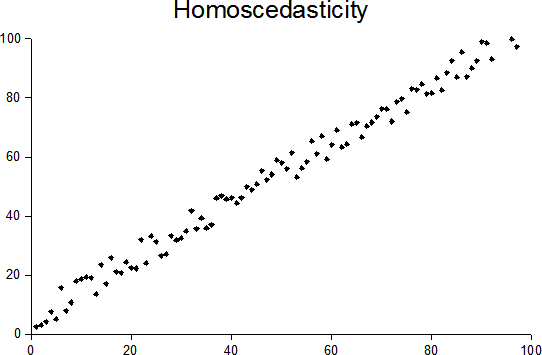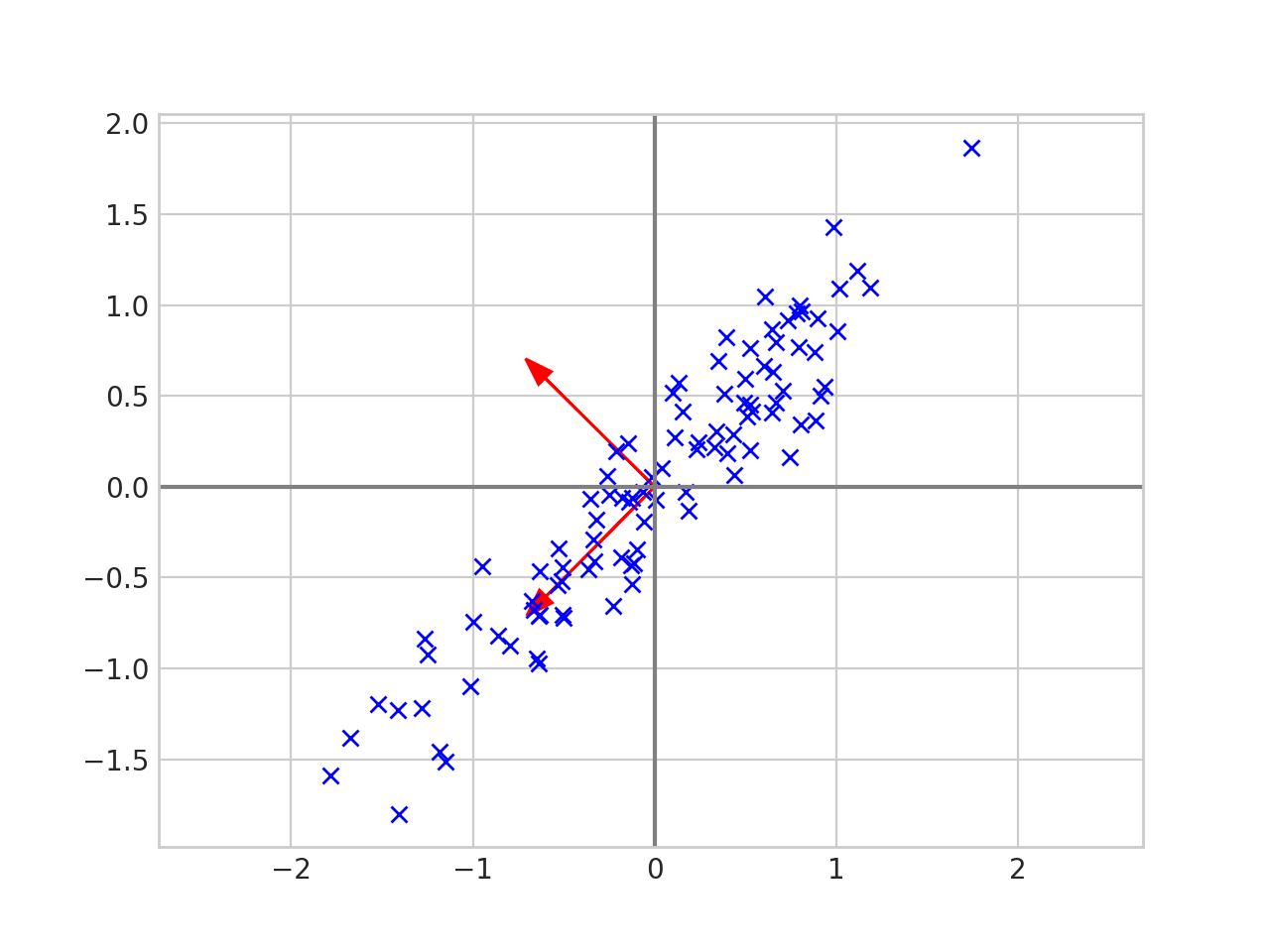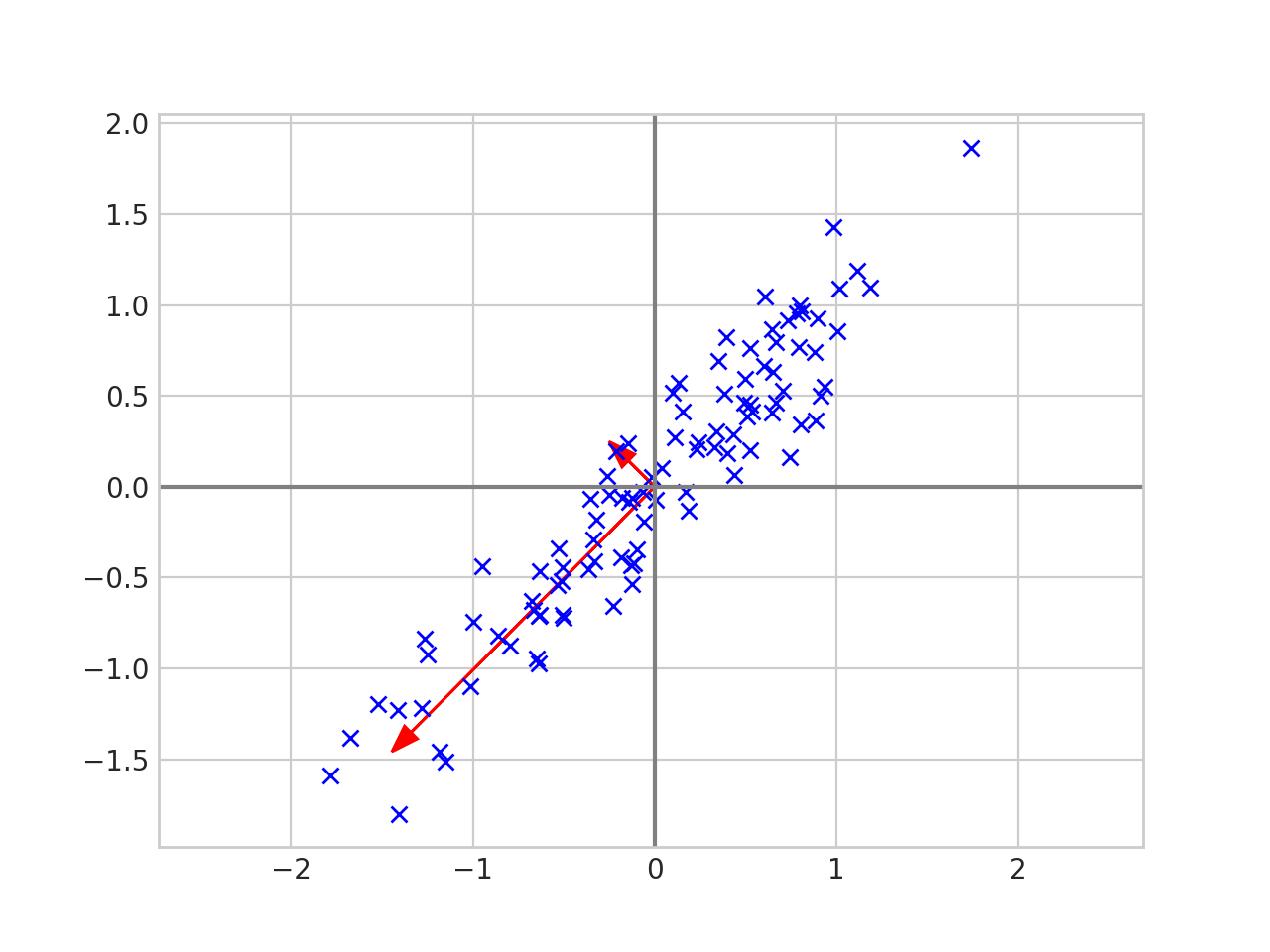BDA-602 - Machine Learning Engineering
Dr. Julien Pierret
Lecture 8
Correlation
-
General:
A mutual relationship or connection between two or more things. -
Statistics:
Degree of correspondence or relationship between two variables (linear) - Just as before: Categorical / Continuous combinations
One source
›
Correlation - Continuous / Continuous
- Easy
-
Pearson correlation coefficient
-
scipy.stats.pearsonr - Measures linear relationships
-
Symmetric
: Swapping the two gives the same value
- Sensitive to outliers
-
homoscedasticity
- Variance doesn't change
$$ r = \frac{\sum_{i=1}^{n} (x_i - \bar{x}) (y_i - \bar{y})}{\sqrt{\sum_{i=1}^{n} (x - \bar{x})^2 \sum (y - \bar{y})^2}} $$ -
›
Homoscedasticity vs Heteroscedasticity
›
Correlation - Pearson's Correlation r
Correlation - Continuous / Ordinal
- Biserial
- Continuous / Ordinal Categorical (dichotomous)
-
Kendall's $\tau_{b}$ - rank correlation coefficient
- Not perfect: meant for ordinal / ordinal
-
scipy.stats.kendalltau
- For large levels (>6) ordinals
Correlation - Continuous / Nominal
- Hardest one
-
Continuous /
dichotomous
-
Point Biserial Correlation
-
scipy.stats.pointbiserialr - Far from perfect
- Assumes Normality
-
-
Point Biserial Correlation
- Continuous / Nominal
›
Adding a variable to the dataset
- Add something that we know is predictive
df["SeniorCitizenContinuous"] = [
random.uniform(0.0, 0.5) if v == 0 else random.uniform(0.5, 1.0)
for v in df["SeniorCitizen"].values
]
-
If
SeniorCitizen == 0, random number between (0.0,0.5) -
else (
SeniorCitizen == 1), random number between (0.5,1.0)
›
Correlation - Point Biserial
Correlation - Correlation Ratio
Correlation - Ordinal / Ordinal
- Rank ordered categoricals
-
Rank Correlation
- Spearman's rank correlation coefficient
- Kendall's $\tau_{b}$ - rank correlation coefficient
- Goodman and Kruskal's gamma
-
Somers' D
- Untested code
›
Correlation - Ordinal / Nominal
-
Rank-biserial correltion
- Code (untested)
- For large levels (>6) ordinals
›
Correlation - Nominal / Nominal
-
Goodman and Kruskal's lambda
- Asymmetric
-
Cramér's V
- Symmetric
-
Code

-
Tschuprow's T
- Symmetric
-
Code

›
Correlation - Cramer's V
Correlation - Tschuprow's V
Correlation - Categorical / Categorical - Which to keep?
-
They're correlated, which to keep/remove?
-
Based off response
-
p-value and Z/t-score
- One variable model
-
Difference with mean of response weighted
- Higher the better
-
p-value and Z/t-score
- Based off differences
-
Based off response
›
Entropy
- Information Theory
- Measure of "information" inherent in a variable's possible outcomes
- Best lossless compression
-
scipy.stats.entropy
Given a discrete random variable $X$, with possible outcomes
$x_{1},...,x_{n}$, which occur with probability $\mathrm {P}
(x_{1}),...,\mathrm {P} (x_{n})$, the entropy of $X$ is formally
defined as:
$ \mathrm {H} (X)=-\sum _{i=1}^{n}{\mathrm {P} (x_{i})\log \mathrm
{P} (x_{i})}$
›
Why does all this correlation matter?
- Variable/Dimension Reductions
-
Real-world: 1000s of potential predictor
- Many will overlap
- Can't look at them all
- Most models do better with less predictors
›
Principal component analysis
-
Dimension reduction technique
- Continuous variables
-
sklearn.decomposition.PCA
›
PCA - How does it work
Two Continuous Features
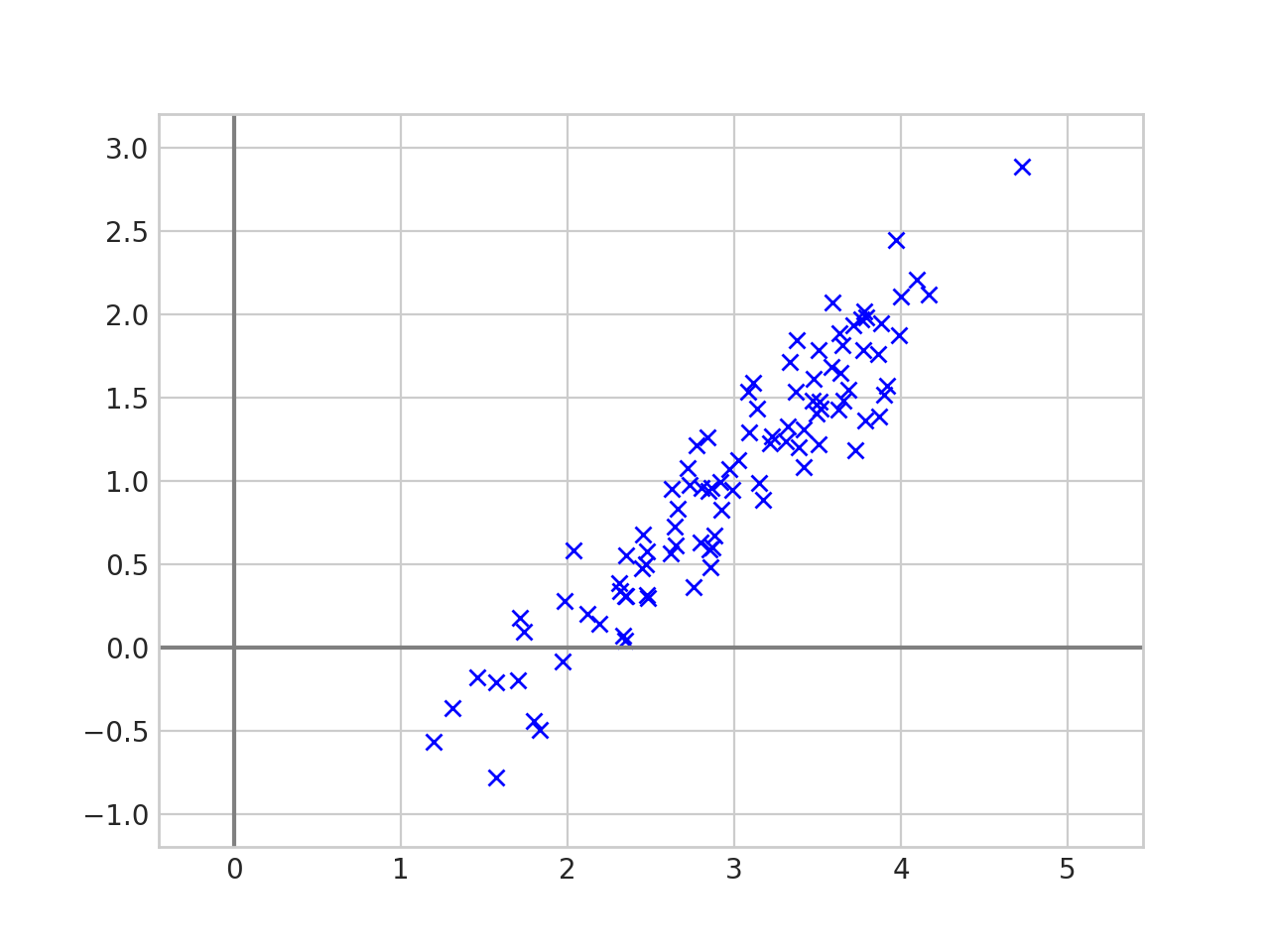
Clear relationship
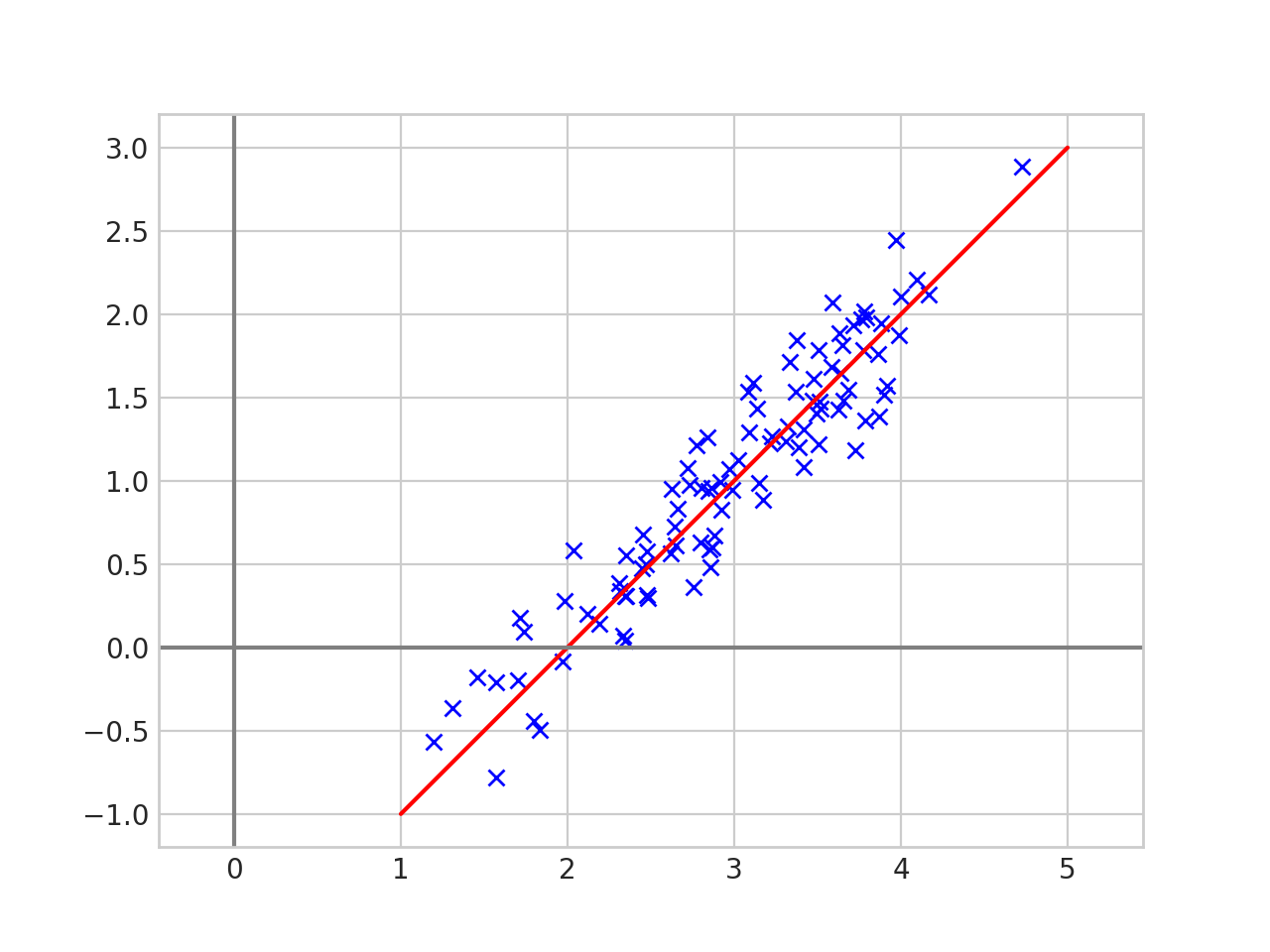
PCA - How does it work
PCA - How does it work
Spread
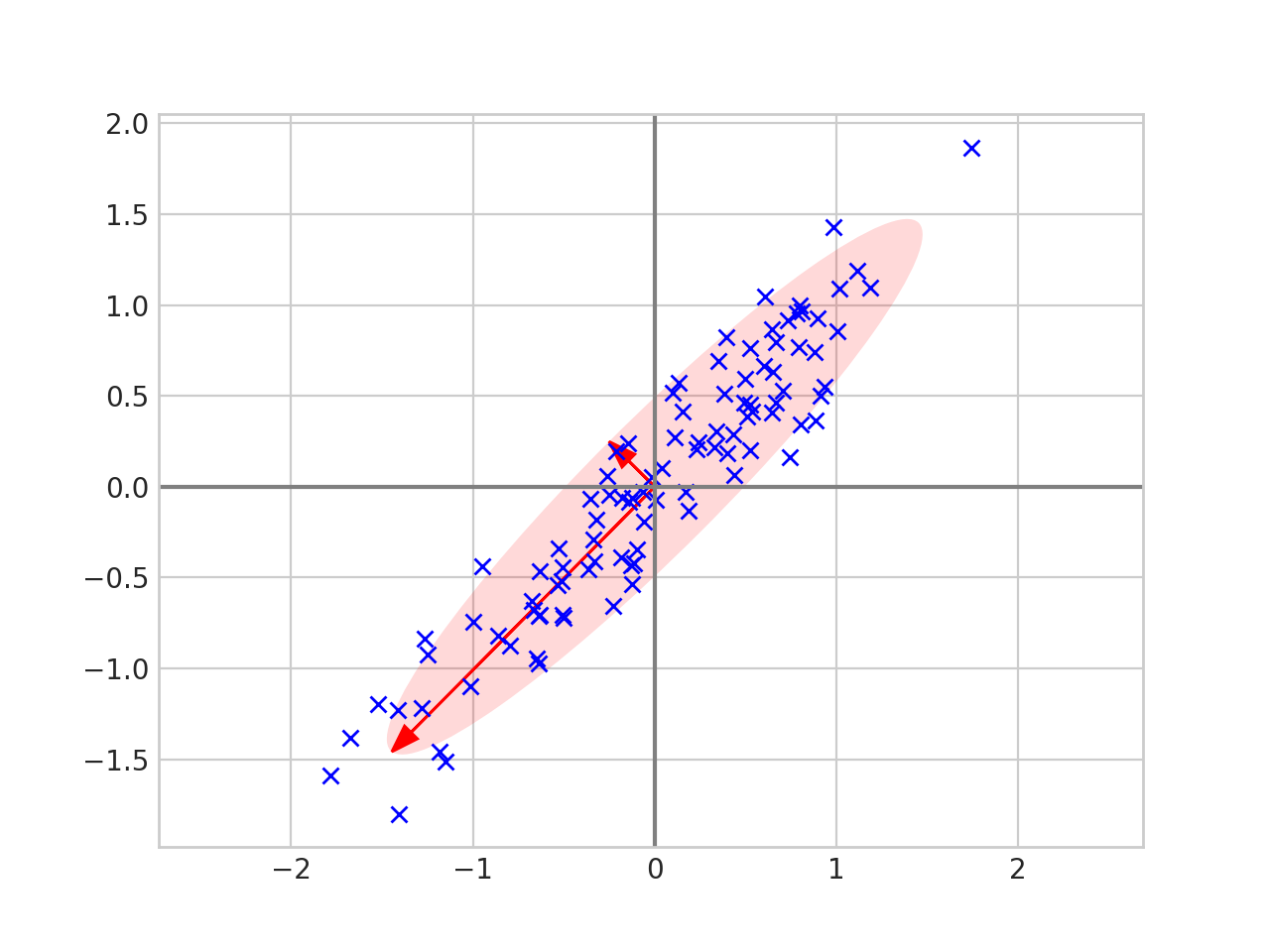
PCA - Collapsed
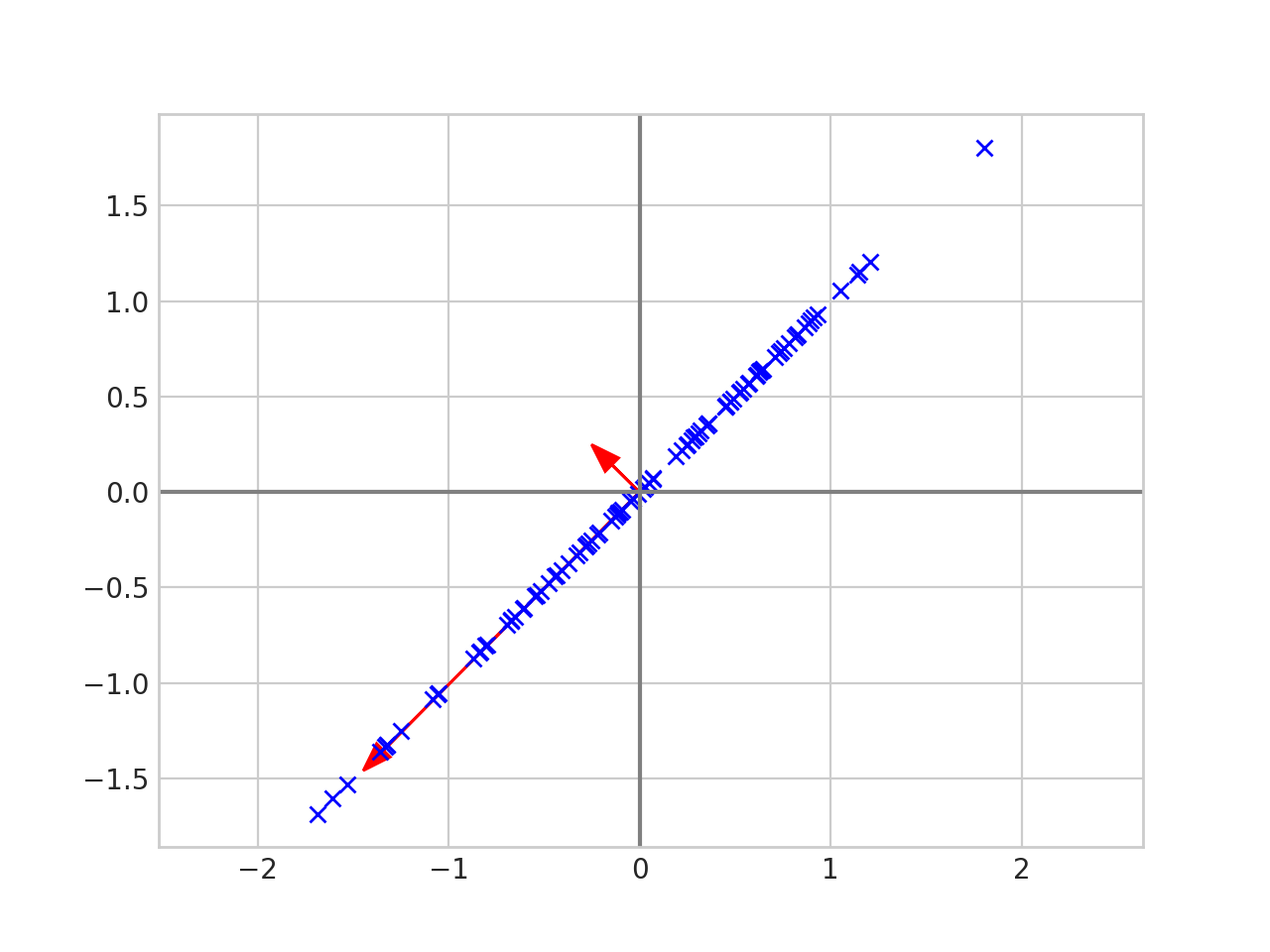
PCA - Usage
-
Usage
-
Don't pick a number of features to use!
😡 -
explained_variance_ratio_- Values sum to
1 -
Gives how much of the variance is explained by each
component
-
[0.39, 0.32, 0.19, 0.1 , 0. ]
-
-
Cummulative sum on it
-
[0.39, 0.72, 0.9 , 1. , 1. ] - Pick a cut-off, ie: 90% variance explained
-
- Values sum to
-
Don't pick a number of features to use!
-
Caveats
- Lose explainability 📣
›
Coming Up with New Features
- Imagination!
-
Another, combining features together
- Continuous with continuous
- Continuous with categorical
- Categorical with categorical
›
Continuous with Continuous
-
Examples
-
Loan to Value (LTV)
- Loan / Appraised Value
- Great indicator of risk
-
Value to
Automated Valuation Models (AVM)
- Appraisal Value / AVM
- Appraiser commited fraud?
-
Loan to Value (LTV)
-
Coming up with our own
-
Brute force it
-
n=100 variables: $ \binom{100}{2} = 4,950 $ -
n=1000 variables: $ \binom{1000}{2} = 499,500$ - Get's ugly fast
-
Remove highly correlated variables
- Lowers the
n - That wouldn't catch Value to AVM
- Lowers the
-
-
Brute force it
›
Continuous with Continuous
- Generate list yourself
-
Come up with candidates
-
Plot
- Check for relationships
- A heatmap binning both predictors with the value in the bin the difference with the response
-
Operations
- Divide
- Plane rotations
-
Plot
-
Brute force
- Hard to do well
›
Continuous with Continuous - Brute Force
-
Ranking
-
Extend the difference with mean of response with an extra
dimension
- Calculate both weighted and unweighted
- Same as before, just on 2 dimensions
- The higher the better
-
Extend the difference with mean of response with an extra
dimension
-
Plotting (2 ways)
-
Plot bin mean $\mu_{(i,j)}$ as the $z$ (height)
- Must scale the legend so the center is at the population mean
-
Plot like a
residual
- The $z$ (height) in the plot is $\mu_{(i,j)} - \mu_{pop}$ (the bin mean - population rate)
- Can also plot the weighted version this way
-
Plot bin mean $\mu_{(i,j)}$ as the $z$ (height)
›
Cont. with Cont. - Difference with mean
No relationship (Bin mean plot)
Cont. with Cont. - Difference with mean
No relationship (Residual plot)
Cont. with Cont. - Difference with mean
No relationship - (Bin mean vs. Residual plot)
Cont. with Cont. - Difference with mean
No relationship (Residual Weighted)
Cont. with Cont. - Difference with mean
No combined relationship (Bin mean plot)
Cont. with Cont. - Difference with mean
No combined relationship (Residual plot)
Cont. with Cont. - Difference with mean
No combined relationship - (Bin mean vs. Residual plot)
Cont. with Cont. - Difference with mean
No combined relationship - (Residual Weighted)
Cont. with Cont. - Difference with mean
Combined relationship - (Bin mean plot)
Cont. with Cont. - Difference with mean
Combined relationship - (Residual plot)
Cont. with Cont. - Difference with mean
Combined relationship - (Bin mean vs. Residual plot)
Cont. with Cont. - Difference with mean
Combined relationship - (Residual Weighted)
Cont. with Cont. - Combined relationship
- They must be correlated! 😏
x_1 = numpy.random.randn(n)
x_2 = numpy.random.randn(n) + 4
y = 5 + x_1 + x_2 + numpy.random.randn(n) / 5
correlation, p = pearsonr(x=x_1, y=x_2)
print(correlation)
-
Pearson's:
0.02282513458861322😲 - Nope
- That's why it's important to remove correlations!
- Normal Distribution
›
Continuous with Categorical
- Special
-
Example
-
Unsuppervised model to classify individuals into buckets

-
SAS -
PROC VARCLUS(Python: varclushi) -
Buckets
- Risky Ryan
- Honest Abe
- Stepford Wife
- ...
- Plotting against response, clearly saw a difference
-
Plotted it against other known good continuous predictors
- Those predictors behaved differently too!
- Good place to fork the model 🍴
-
Unsuppervised model to classify individuals into buckets
›
Forking a Model
- More common in regression/logistic models
-
Build seperate models from these categories
-
If certain sub populations behave differently
- Restrict the efficacy of predictors by not forking
-
If certain sub populations behave differently
›
Plotting
-
Just like before, this can be plotted
-
Plotting (2 ways)
-
Bin mean
- $\mu_{(i,j)}$ as the $z$ (height)
-
Residual
- The $z$ (height) in the plot is $\mu_{(i,j)} - \mu_{pop}$ (the bin mean - population rate)
-
Bin mean
-
Plotting (2 ways)
Cat. with Cont. - Difference with mean
No relationship (Bin mean plot)
Cat. with Cont. - Difference with mean
No relationship (Residual plot)
Cat. with Cont. - Difference with mean
No relationship (Bin mean vs Residual plot
Cat. with Cont. - Difference with mean
No relationship (Residual Weighted)
Cat. with Cont. - Difference with mean
Relationship (Bin mean plot)
Cat. with Cont. - Difference with mean
Relationship (Residual plot)
Cat. with Cont. - Difference with mean
Relationship (Bin mean vs Residual plot)
Cat. with Cont. - Difference with mean
Relationship (Residual Weighted)
How was this data generated?
-
Just as before
- Data isn't correlated
- Worth knowing how to generate it
x_1 = numpy.random.poisson(lam=2, size=n)
x_1 = numpy.array([chr(x + 65) for x in x_1])
x_1_a = numpy.array([10 if x == "A" else 0 for x in x_1])
x_1_d = numpy.array([20 if x == "D" else 0 for x in x_1])
x_1_f = numpy.array([5 if x == "F" else 0 for x in x_1])
x_2 = numpy.random.randn(n) + 4
y = 5 + x_1_a + x_1_d + x_1_f + x_2 + numpy.random.randn(n) / 3
›
Categorical crossed with Categorical
- Least useful
- Can't remember using a feature discovered this way
-
Still ran it regardless

-
Used it as compliment to the "forking" model
- For candidate forking variables, see if there's a relationship change on the categoricals as well
- Just like before: we can plot them
›
Cat. with Cat. - Difference with mean
No relationship (Bin mean plot)
Cat. with Cat. - Difference with mean
No relationship (Residual plot)
Cat. with Cat. - Difference with mean
No relationship (Bin mean vs Residual plot)
Cat. with Cat. - Difference with mean
No relationship (Residual Weighted)
Cat. with Cat. - Difference with mean
Relationship (Bin mean plot)
Cat. with Cat. - Difference with mean
Relationship (Residual plot)
Cat. with Cat. - Difference with mean
Relationship
Cat. with Cat. - Difference with mean
Relationship (Residual weighted)
Missing Values
- Common problem
-
Training?
- Split into different models
- Fill the values in
- Predict the values
- Throw out the observations
-
Production?
- Model will break
- Fill it in?
- Predict the values?
›
Build seperate models
-
Amazing predictor
- Missing fairly often
- Crazy good
- Stupid not to use it
-
Split models
- With it
- Without it
- At prediction decide which model to run
-
Compare performance with a general model (if available)
- If it is good, you'll see a rise in accuracy
- You're not restricted to build one model!
›
Fill value in
-
Training vs Production
-
Training
- Median usually better than Mean
-
Production
-
Error on the side of caution
- Fraud Model: set it to give higher likelihood of fraud
-
Error on the side of caution
-
Training
›
Missing Values - The Model Solution
- Model it!
-
Building models to predict mortgage appraisal fraud

-
Recall that unsuppervised model to classify individuals in
buckets
- Risky Ryan
- Honest Abe
- Stepford Wife
- ...
-
Input into final models
- Different models for each category
-
FICO Credit scores
- Required
- Expensive 💰
- Paid for cheaper variables and predicted it instead
- Eventually migrated model to use this new predictor
›
Missing Values - Throw out the observations
-
Predictor not predictive
- Don't use it
- Don't throw out the observation!
-
Predictor is predictive
- Only missing during training
- Not missing that many
- ... maybe throw it out 🤷
- Throwing out observations last thing you want to do!
›
Box-Cox Transformation
- Model requires Z-normal data
-
scipy.stats.boxcox- Will find the optimal λ to normalize the data
-
To check for normality
-
Normal Probability Plot
-
scipy.stats.probplot - r² - square of the sample correlation coefficient between outcomes and predictors
-
-
Kolmogorov-Smirnov Test
-
scipy.stats.kstest - Bad with large samples
-
-
Normal Probability Plot
›
Box-Cox Transformation Code
Box-Cox Transformation Plot Output
BoxCox Transform Caveats
-
Great,... when it works
🙁 - To retrieve explainability, need to work backwards through the formula
›
In Summary
-
High cardinality categoricals
- Inspection
- Statitsical methods
- Lookup tables
- Grouping
-
Correlations
- Continuous
- Ordinal
- Nominal
- Dimension Reduction
-
Brute force feature Engineering
- Continuous
- Categorical
- Handling missing values
- Box-cox Transformation
Homework
- Make sure you've picked a dataset by now
-
Mid-term next week
- I'd put money it's related to automating some of the stuff in here
